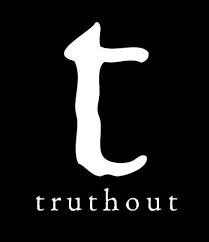Truth Out, December 7, 2013
Next time someone tells you they shop at Walmart because it’s cheap or convenient, share this.
Despite 1,500 protests nationwide against Walmart, the world’s biggest retailer claimed its most lucrative Black Friday ever in 2013. Our friends and neighbors flock there.
They do – even those who have seen mom-and-pop stores shut down when Walmart moved into town, who miss being able to pick up one or two items and be out of a store in 10 minutes, who personally know Walmart employees relying on food stamps and who have heard how much money the Walton family continues to accumulate.
Walmart is the poster child for how huge corporations have undermined people’s ability to make a living. It does this by sending manufacturing abroad to countries where labor is cheap, at the same time paying its own employees less than a living wage, using other unfair labor practices in numerous locations in the United States, and undercutting locally owned enterprises right out of business. It harms Main Streets and local commerce centers across the country and further drives people to malls.
So why do people go there? When asked this question, Walmart shoppers uniformly respond that “it’s cheap and convenient, and I can’t afford to shop at [other places].”
I’d wager they never saw Robert Greenwald’s chilling 2005 documentary for Brave New Films, Walmart: The High Cost of Low Price, or read some basic facts about Walmart put together in one place. I think they’d feel differently if shown ways to shop that are just as inexpensive. At least I hope so.
…snip…
The median annual salary for a full-time Walmart employee has been estimated at $18,000 to $22,000. In a study commissioned by the (Democratic Party) Committee on Education and the Workforce in 2013 in Wisconsin, Walmart was ranked as the employer with the most workers – 3,216 – on the state’s Medicaid program. Walmart was responsible for 9,207 enrollees, including the children and adult dependents of those workers. Thus the burden of paying for the Walmart employees’ families’ food assistance and medical services falls (estimated at nearly $1 million at one store alone) to their fellow taxpayers.
That’s how Walmart likes it. It’s part of its business model, just as is outsourcing jobs to countries with lower wages.
…snip…
But many argue in defense of their use of Walmart (which now, thanks to the same kind of strong-arm tactics it uses with suppliers of other goods, has a phenomenal 25 percent share of all US food market sales), that it’s cheap and healthful.
Stacy Mitchell wrote in Grist in December 2011, pointing to a study in Social Science Quarterly that showed that neighborhoods where a Walmart store opens have more poverty and food-stamp usage than communities without a Walmart. This might have something to do with Walmart’s record of putting other employers out of business – and more people out of work.
…snip…





